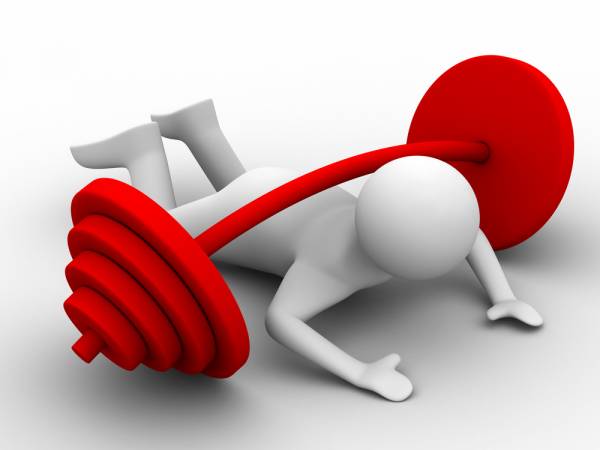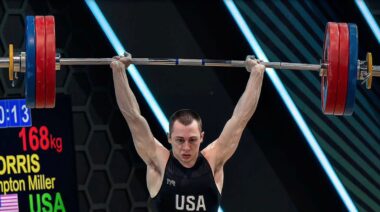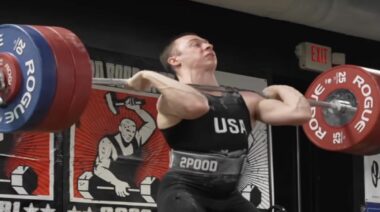It’s your first day. You have never practiced the snatch before. You have seen videos. You have watched other people at your gym do them. They look wicked awesome. And you want in on the fun.
You have a young, handsome, and unusually lean coach who puts a PVC pipe into your hands and you are off on your first-ever coaching session on the Olympic lifts. Your coach gives you so many exciting things to work on. Who knew there was so much to think about?
For an entire hour he goes on and on about absolutely everything you are doing wrong. You can’t seem to do anything right. It is amazing how bad you are. At the end your coach says, “Good job,” which shocks you. You pay him. He smiles. You shake hands. You’re done.
You leave the gym after your session feeling totally defeated. “God. I knew it,” you say to yourself, “I really do suck!”
But did you really suck? Or did your coaching suck? If you walked out of your session with far too much information in your head and a defeated attitude about your ability to ever learn how to snatch well, your coach failed you.
Your Gold Medal Napkin, OR, Coaching While Drunk
My master’s degree advisor used to say, “If you can’t do binary arithmetic while drunk, you are not a mathematician.” Similarly, the following holds for coaches:
Gold Medal Napkin: You should be able to write down on a napkin, while drunk in a bar, the first five things you want a beginner to learn – in order.”
Last week I told you that coaching requires a lot of lying. And I confessed there were things I wasn’t telling my beginning lifters that were actually true. This week I’m here to tell you how to create you master plan, your lesson plan, the skeleton that will hold together the meat of your students learning. You can’t just blast them with everything all at once. And you certainly can’t harp on them for every little thing they do wrong.
Beginners need to be told ONE thing at a time. They need to practice that one thing until they get it right. Only then can you move on to the next thing.
The set of all technical points of the snatch is rather large – there are many elements in it, but not all of them are equally important. Some technical points are FAR more important than other technical points. For instance, the lockout is significantly more important than the start position.
 You could teach each technical point in order of importance. Or, you could order them by how hard or easy a certain transition is to make. There are many combinations. But every good coach has an order in which they teach the technical skills of the snatch. And that order defines the rest of the learning process. This ordering, whatever it is, is your lesson plan, your method of taking a lifter from clueless to a “gold medal.” Without this, you are just fumbling in the dark.
You could teach each technical point in order of importance. Or, you could order them by how hard or easy a certain transition is to make. There are many combinations. But every good coach has an order in which they teach the technical skills of the snatch. And that order defines the rest of the learning process. This ordering, whatever it is, is your lesson plan, your method of taking a lifter from clueless to a “gold medal.” Without this, you are just fumbling in the dark.
Your plan should be simple enough to write down on a napkin at a bar while you are drunk. If you can’t do that, you don’t really have a plan. And your student is going to suffer. Teach them ONE thing at a time. Let them master that thing. Only then can you teach them the next thing on your napkin.
The Error Correction Principle
There is an obvious downside to this method of teaching. Almost everything the student does at first will be wrong. But you are only allowed to fix one thing at a time, so how do you deal with them screwing everything else up?
You bite your tongue – hard if you have to!
Let them figure out how to do the first thing on the napkin, fully accepting that they are going to really mess the rest of it up. Chill out, they will get there. Learning complex tasks is a process of error correction. Imagine a red sine wave oscillating up and down over a blue line running through its middle. Now imagine that sine wave is slowly shrinking down so eventually it becomes a straight line. At first, each time it shoots up and down it ends up way over the line. But since the sine wave is shrinking down over time, the “errors” of the highest ups and lowest downs are getting closer and closer to the line. Eventually, there is little (if any) error, or shooting over the line. So the red sine wave has become a red line laying itself right on top of the original blue line, joining it, and becoming a newer, more powerful purple line.
Taking a red sine wave and slowly turning it into a purple line is very similar to how you teach complex technical skills. You overshoot one way, pull back, and overshoot the other way, then again and again, each time overshooting less, until one day you got it.
Example: Your First Kiss (Day) with the Snatch
My own Gold Medal Napkin for teaching the snatch looks like this:
- Lockout position
- Hip position
- Start/floor position
- Knee position
- Third pull (or dealing with the arms)
The first three take up the first day (or week, if we are going slow). We then drill this for about a month. Then I teach the fourth one, which can last another three or even six weeks. Then finally I teach the last one, which may take another three to six weeks.
 All together it takes about twelve weeks on average to run through this progression. Clearly, there are drills and other things I have lifters do all along, but what is written above is the skeletal structure – the lesson plan – the gold medal napkin – that frames the entire learning process.
All together it takes about twelve weeks on average to run through this progression. Clearly, there are drills and other things I have lifters do all along, but what is written above is the skeletal structure – the lesson plan – the gold medal napkin – that frames the entire learning process.
After this, it becomes very individual. I still have a napkin, but it is tailored to the lifter based on what I see. I don’t believe in being too ridged with your planning. But by the same token, I don’t want you coaching without a plan.
Conclusion
Every beginning coach makes the same mistakes. They over-coach, say too much, and overwhelm their students. The reason is always noble. They want to help you. They want to fix all of your flaws. And heaven knows, you have a lot of them!
Learn from their mistakes. Go to a bar, right now, start drinking, and create your own Gold Medal Napkin. Your athletes will thank you.
Photos courtesy of Shutterstock.






